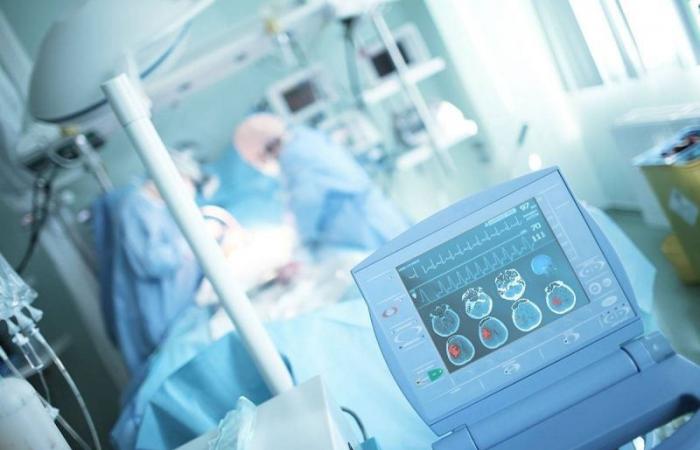A new path is emerging to both “identify and destroy the blood clots responsible for strokes”, according to Inserm researcher Thomas Bonnard and his team, based in Caen.
This 37-year-old researcher, with two colleagues from the BB@C laboratory (Blood and Brain at Caen-Normandie, Editor’s note), synthesized particles called PHySIOMIC to identify and destroy the tiny blood clots responsible for strokes, with more precision and less toxicity for the body than the current process.
Effective in mice, PHySIOMIC still needs to be tested on two “large animals”, then humans, and a procedure must be defined to mass produce it before marketing it, which will not happen for “five to ten years” , according to Thomas Bonnard.
“An ischemic stroke is caused by a clot that migrates from the carotid artery and blocks blood flow in the brain, thus killing neurons. Today, we can see large clots in MRI (magnetic resonance imaging), says Mr. Bonnard. On the other hand, we did not know how to detect the smallest clots, or “microthrombi”. »
The PHySIOMIC contrast agent is made up of microparticles of iron oxide and polydopamine: an assembly of molecules of the neurotransmitter dopamine by which neurons usually communicate, used here as a material. Once injected into the bloodstream, it will attach to the microclot and will be visible on MRI thanks to its magnetic properties.
There are “concerns” with the contrast agents currently used based on Gadolinium, “associated in the past with certain risks of renal complications”, according to Thomas Bonnard.
This is not the case, according to the researcher, of PHySIOMIC: “It will never have toxic effects, since it exclusively uses materials that are already present in the body. »
The “MIC” in PHySIOMIC stands for “Mussel Inspired Clusters” because the mussel, to attach itself to its rock, also uses dopamine.
“When we inject something into the blood, proteins “clump” on it and participate in attaching to the microclot,” describes Charlène Jacqmarcq, 30 years old.
This postdoctoral student at BB@C sits in front of a “microfluidic station”: a network of tubes and pumps responsible for reproducing the blood system in which she “simulates strokes” on human blood recovered in partnership with the French Blood Establishment (EFS).
Once identified, the microthrombi must be destroyed, research carried out by Audrey Picot, a 27-year-old doctoral student at the BB@C laboratory, who adds a tissue plasminogen activator (tPA) to PHySIOMIC.
The only pharmacological treatment currently delivered to stroke victims, tPA presents a risk of bleeding which will be reduced by targeting the contrast agent PHySIOMIC, according to Mr. Bonnard.
“We have set up a collaboration with the Australian pharmaceutical company CSL Behring, as well as Inserm Transfert, to develop this diagnostic tool and make it become a theranostic tool: this means that it will both diagnose and make visible microclots, allow their breakdown and restore blood flow in patients,” specifies Ms. Picot.
“BB@C was founded by Inserm, the University of Caen and the Caen University Hospital,” explains Denis Vivien, 58, professor of cell biology and director of the institute. “One hundred and seventy people work there associated with four start-ups to develop new therapeutic and diagnostic strategies, mainly on strokes,” explains its founder.
Matthieu CLAVEL/AFP
A new path is emerging to both “identify and destroy the blood clots responsible for strokes”, according to Inserm researcher Thomas Bonnard and his team, based in Caen. This 37-year-old researcher synthesized with two colleagues from the BB@C laboratory (Blood and Brain at Caen-Normandie, Editor’s note) particles called PHySIOMIC allowing the identification and…
- -





